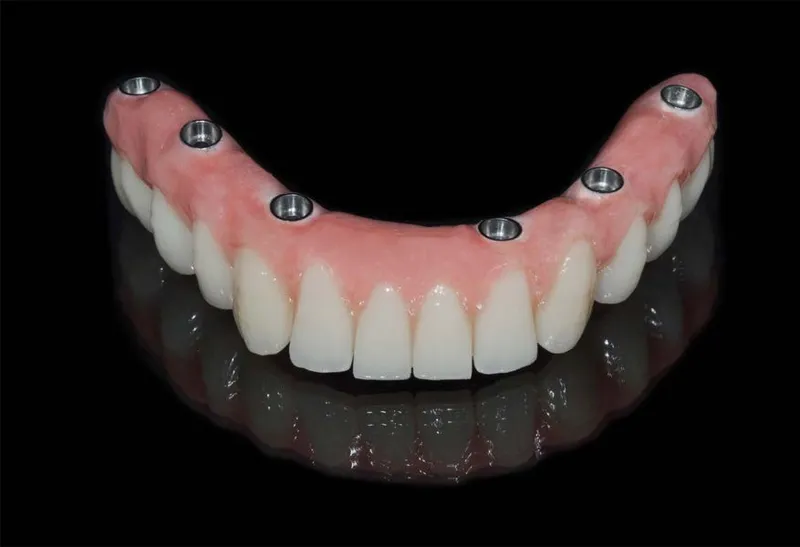When considering dental restoration options, understanding the dental bridge cost is crucial. A dental bridge is a proven solution for replacing one or more missing teeth, bridging the gap and restoring both functionality and aesthetic appearance. The cost can vary widely depending on factors such as the number of missing teeth, materials used, and geographical location. In this article, we’ll explore the components that influence the price of dental bridges and offer insights into making this important health investment more manageable.
Factors Influencing Dental Bridge Cost
The cost of a dental bridge can vary significantly based on various factors. Understanding these factors can help patients make informed decisions about their dental care. Here, we will explore the key elements that influence the cost of a dental bridge.
Choosing the right dental bridge is crucial for both functionality and aesthetics. Various factors play a role in determining the overall cost, including the type of bridge, the materials used, and the dentist’s expertise.
Each of these factors contributes differently to the final pricing, and it is essential to consult with your dentist to understand what best suits your individual needs and budget.
Type of Dental Bridge
One of the primary factors influencing the cost of a dental bridge is the type of bridge chosen. Generally, there are three main types of dental bridges:
- Traditional Bridges – These are the most common type of bridge, consisting of one or more artificial teeth held in place by dental crowns.
- Cantilever Bridges – Used when there are adjacent teeth on only one side of the missing tooth or teeth.
- Maryland Bridges – Also known as resin-bonded bridges, these involve a metal or porcelain framework that supports the artificial tooth.
Each type of bridge has its own cost implications. Traditional bridges tend to be more expensive due to the additional work required to prepare the adjacent teeth. Maryland bridges, although often less invasive, may not be suitable for all types of bites, potentially influencing their long-term cost-effectiveness.

Materials Used
The materials used in the construction of the dental bridge also significantly impact the overall cost. Common materials include:
- Porcelain – Known for its natural look and durability, porcelain is a popular choice but can be more expensive.
- Gold Alloys – Extremely durable but less aesthetic, gold alloys are typically costlier due to the material cost.
- Base Metal Alloys – These are generally less expensive but may not offer the same aesthetic or durability as gold or porcelain.
The choice of material can impact not only the initial cost but also the longevity and maintenance needs of the dental bridge. For example, porcelain bridges are highly aesthetic but may require more regular upkeep compared to metal alloys.
Dentist’s Expertise
The expertise of your dentist is another crucial factor influencing the cost. Highly experienced dentists often charge more for their services, but their expertise can be invaluable in ensuring successful outcomes.
When considering a dentist for your dental bridge, it’s essential to look at:
- Qualifications and Training – A dentist with specialized training in restorative dentistry may provide better results.
- Experience – Dentists with years of experience and a high success rate in similar procedures can offer more reliable outcomes.
- Reputation – Patient reviews and testimonials can provide insight into the quality of care provided by the dentist.
Although a more experienced dentist might come with a higher price tag, the quality of care, lower risk of complications, and potential for a longer-lasting bridge often justify the additional cost.
In conclusion, multiple factors influence the cost of a dental bridge, including the type, materials used, and the expertise of the dentist. By understanding these factors, patients can make more informed decisions about their dental care. For more comprehensive insights into dental health and care options, be sure to explore our other articles.
“`html
Cost Comparison of Dental Bridges
When it comes to replacing missing teeth, two prevalent options are traditional dental bridges and implant-supported bridges. Understanding the cost implications of each can help patients make an informed decision that aligns with their budget and long-term oral health goals.
It is essential to consider not only the initial costs but also the long-term financial implications of each treatment option. While some upfront costs may be more appealing, they may not provide the same value over time. Let’s explore the financial aspects of both traditional dental bridges and implant-supported bridges.
Traditional Dental Bridges
Traditional dental bridges are a common choice for replacing missing teeth. These bridges typically involve creating a prosthetic tooth (pontic) that is anchored to the adjacent natural teeth using dental crowns. The cost of traditional bridges can vary, but generally, it is considered a more affordable option compared to implant-supported bridges.
The primary factors influencing the cost of traditional dental bridges include:
- Material: The type of material used for the bridge, such as porcelain, ceramic, or metal, can impact the price.
- Number of teeth: The size of the bridge and the number of teeth being replaced also affect the overall cost.
- Condition of adjacent teeth: If the adjacent teeth need additional treatments like root canals or fillings, this can increase the total cost.
While traditional bridges may have a lower initial cost, it is important to consider potential long-term expenses related to maintenance and replacement, as these bridges typically have a lifespan of around 10-15 years.
Implant-Supported Bridges
Implant-supported bridges offer a more durable and natural-looking solution for tooth replacement. This option involves placing dental implants into the jawbone to serve as anchors for the bridge. Although the initial cost of implant-supported bridges is generally higher, the long-term benefits often justify the investment.
The key factors contributing to the cost of implant-supported bridges include:
- Number of implants: The number of implants required to support the bridge can significantly impact the overall price.
- Quality of implants: High-quality implants made from biocompatible materials may be more expensive but offer better longevity and integration with bone.
- Surgical procedures: The complexity of the surgical procedures, including bone grafting and sinus lifts if needed, can also add to the cost.
Despite the higher initial investment, implant-supported bridges often provide superior stability and can last a lifetime with proper care. This can result in lower long-term costs due to minimal need for replacements and repairs.
In summary, both traditional dental bridges and implant-supported bridges have their own cost advantages and disadvantages. It is crucial to weigh the short-term and long-term financial implications when choosing the most appropriate treatment for your dental needs.
We invite you to read more about dental treatments, cost comparisons, and the latest advancements in dental technology in our other articles. Empower yourself with knowledge to make the best decisions for your oral health!
“`
Insurance and Financing Options
Navigating the world of dental implants and bone regeneration can be overwhelming, especially when it comes to understanding the insurance and financing options available. It is crucial to have clear information on how to finance your dental care, ensuring that you can make the best decision for both your health and your wallet. Here, we will break down the most common insurance and financing options available for these dental procedures.
In the context of a patient requiring the replacement of a bridge or the loss of a lateral incisor, understanding your insurance and financing options can make a significant difference in your treatment’s affordability and accessibility. With the right knowledge, you can confidently proceed with the necessary dental care without the added stress of financial uncertainty.
Dental Insurance Coverage
Dental insurance can play a significant role in reducing the out-of-pocket costs associated with implantology and bone regeneration procedures. Not all dental insurance plans cover these treatments comprehensively, so it’s vital to review your policy details. Typically, dental insurance covers a percentage of the cost, often ranging from 50% to 80%, depending on the plan and the specific procedure.
When dealing with complex cases, such as a 45-year-old patient needing a bridge renewal or a lateral incisor replacement, it is essential to confirm the pre-authorization requirements of your insurance provider. This step ensures that there are no unexpected costs and that you understand what portion of the expenses will be covered by your plan.
Some insurance plans may also require you to choose a dentist within their network. Ensure your preferred specialist is included in the network to maximize your benefits and minimize out-of-pocket costs. Here are some typical coverage points to keep in mind:
- Percentage coverage of the total procedure cost
- Annual maximum benefits
- Network requirements
- Pre-authorization necessities
Payment Plans and Financing
For patients without comprehensive insurance coverage, or for those facing high out-of-pocket costs, payment plans and financing options offer a valuable alternative. Many dental offices provide flexible payment plans that allow you to spread the cost of your treatment over several months or even years.
Third-party financing companies, such as CareCredit or LendingClub, specialize in healthcare financing, including dental treatments. These companies often offer low-interest or interest-free financing for qualified applicants, making it easier to manage the financial burden of extensive dental work. Important factors to consider when selecting a financing option include:
- Interest rates
- Repayment terms
- Approval process
- Credit requirements
Additionally, some dental practices may offer in-house financing plans. These plans typically feature customized repayment schedules designed to fit your budget. Be sure to discuss all available options with your dental provider to find the plan that best meets your needs.
In conclusion, understanding your insurance and financing options is a critical step in planning for dental implants and bone regeneration treatments. By exploring dental insurance coverage and available payment plans, you can make informed decisions that align with your financial situation. If you found this article helpful, be sure to check out our other articles for more insights into dental care and treatment options.
Long-term Value of Dental Bridges
Dental bridges have been a cornerstone in restorative dentistry for decades. Crafted to replace missing teeth, they not only enhance aesthetic appeal but also restore functionality. A well-fitted dental bridge can provide a *remarkable* solution for those suffering from tooth loss, offering a range of benefits from improved chewing capabilities to enhanced speech. However, the real value of dental bridges lies in their long-term benefits. When properly maintained, dental bridges can last for many years, making them a cost-effective and reliable solution for tooth replacement. The technology and materials used in dental bridges have advanced significantly, providing patients with options that are both durable and visually appealing.
Durability and Lifespan
One of the primary concerns for patients considering a dental bridge is its durability and lifespan. Modern dental bridges, when crafted from high-quality materials such as porcelain fused to metal or all-ceramic, can last anywhere from 5 to 15 years or even longer with proper care.
Factors that influence the lifespan of a dental bridge include:
- Material quality: High-grade materials tend to last longer and resist wear.
- Oral hygiene: Regular brushing, flossing, and dental check-ups are crucial.
- Bite force: Patients with a heavy bite or those who grind their teeth may experience shorter bridge lifespans.
Documented studies have shown that regular dental check-ups and meticulous oral hygiene can *significantly* extend the lifespan of a dental bridge, highlighting the importance of ongoing dental care.
Aesthetic Benefits
Today’s dental bridges are designed to blend seamlessly with a patient’s natural teeth, offering substantial aesthetic benefits. They are crafted to match the color, shape, and size of the adjacent teeth, ensuring a harmonious and natural look.
These aesthetic improvements not only enhance a patient’s smile but also boost their self-confidence. The advancements in dental materials allow for the creation of bridges that are virtually indistinguishable from natural teeth, addressing common concerns about the artificial appearance of older models. Moreover, modern dental bridges can correct a range of dental issues, including gaps and misalignment, enhancing the overall symmetry and appeal of the patient’s smile. This aesthetic transformation often leads to improved social interactions and a better quality of life.
Oral Health Improvement
A pivotal advantage of dental bridges is the improvement in oral health. Bridges help maintain the alignment of adjacent teeth, preventing them from shifting into the space left by a missing tooth. This alignment is crucial for the proper distribution of bite forces and overall dental function.
By filling the gap left by a missing tooth, dental bridges also prevent the deterioration of the jawbone. The absence of a tooth can lead to bone loss in the jaw over time, but a dental bridge helps distribute bite pressure evenly, preserving jawbone integrity.
Furthermore, dental bridges play a vital role in maintaining oral hygiene. They prevent food particles and plaque from accumulating in the empty spaces, reducing the risk of gum disease and tooth decay. Regular dental visits and proper cleaning techniques can ensure that the bridge remains in optimal condition, contributing to overall oral health.
In summary, dental bridges are a long-term solution that offer a multitude of benefits, from enhanced durability and aesthetic appeal to significant improvements in oral health. Explore more articles on our website to discover additional insights into dental care and advanced restorative solutions.
Common Questions About Dental Bridge Costs
If you’re considering replacing missing teeth with a dental bridge, understanding the costs involved is crucial. Below, we address a common question to help you plan your dental care wisely.
What Factors Influence the Cost of a Dental Bridge?
The cost of a dental bridge can vary depending on several factors including the number of missing teeth being replaced, the material used (such as porcelain, ceramic, or metal alloys), the complexity of the placement, and the geographical location of your dentist’s office. Additional treatments needed to prepare adjacent teeth or treat underlying oral health issues can also affect the overall cost.

My name is Salman Kapa, a 73-year-old expert in bone regeneration and dental implantology. With decades of experience in the field, I am dedicated to advancing our understanding of oral health and hygiene. Through my research and writing, I aim to contribute to the development of innovative solutions in dental care.




